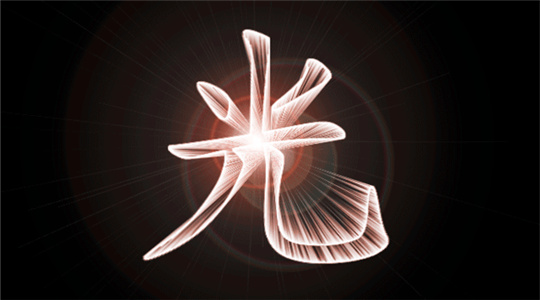
当前课程知识点:Methodology of Scientific Research > Lecture 8 Invention and Patent Application > Section 8.3 Patent Examples and Analysis > 8.3.2 Example of Utility Model Patent
返回《Methodology of Scientific Research》慕课在线视频课程列表
返回《Methodology of Scientific Research》慕课在线视频列表
同学们好
我们这节课学习实用新型专利的写法
下面我们以授权的实用新型专利测量方案为可
调且温度不敏感的光纤
光栅
流速传感器为例
具体介绍实用新型专利的写法
第1部分是说明书
本专利的题目是测量范围可调且温度不敏感的
光纤光栅
流速传感器
专利题目满足以下几点要求
第一
简要清晰
题目说明了专利涉及到一种光纤
光栅
流速传感器
并且具有测量范围可调
温度不敏感两种属性
语言规范
没有采用非技术用语
反映主题传感器
技术领域部分
写明该实用新型直接所属的具体技术领域
该发明设计一种光纤传感技术
特别涉及一种光纤
光栅
流速
传感器
背景技术
这部分
根据相对充分原则
就申请人所知
写明对专利的理解
检索
审查有用的背景技术
此处写明了光纤光栅
传感器的原理
光纤光栅
传感器的作用
以及目前光纤光栅的应用领域指明问题和缺点
检索结果表明目前还没有采用光纤布拉格光栅
的传感技术的流体流速
高灵敏度感测
且测量范围可调的装置
该实用新型填补了这一空白
发明内容部分包括发明目的
目前还没有采用光纤布拉格光栅
传感技术的流体流速高灵敏度感测
且测量范围可调的装置
针对该问题
用正面的尽可能简洁的语言
反映要解决的技术问题
技术方案部分
该技术方案为物品类
它的写法应该为形状
构造
加主要连接关系
首先设计可产生线性应变的等强度梁机构
及独特的流速管结构
然后将中心波长不同的两个光纤
布拉格光栅平行的粘贴在等强度梁中下
上表面和下表面
靠近固定端处
最后将内涵等强度梁结构的传感源桶与流速管连接
整合为流速传感器
至少要写明独立权利要求的技术方案
包括解决技术问题所必须的全部必要技术特征
包括流速管部分
传感圆筒部分
测量部分以及各部分结构
这些必要技术特征
在技术方案中均有写明
说明必要技术特征总和与发明取得的技术效果
之间的关系
根据所测得的波长
漂移量
利用传感测量公式
获得流速的高灵敏度感测
调节控制开关的导向
即不同开孔的导通
可测量不同范围的流速
三
有益效果
清楚客观的写明与现有技术相比所具有的有益效果
采用光纤布拉格光栅传感器
实现流体流速
高灵敏度感测和测量范围可调
附图说明中
要求写明各幅图的图名
具体实施方式
需要具体写
不能引证其他文件
描述了一个具体实施方式
要求描述完整
所述领域技术人员
按照所述内容
可重现发明
描述与实用新型的技术方案相应
并对权利要求中的技术特征给予详细说明
以支持权利要求
权利要求书部分
权利要求一
为该实用新型的独立权利要求
从整体上反映实用新型的技术方案
记载解决技术问题所需的必要技术特征
包括流速管部分
传感圆筒部分
测量部分和各部分的结构
前序部分
一种测量
范围可调的高灵敏度
光纤流速传感器
包括流速管部分
传感圆筒部分及测量部分
写明要求保护的实用新型技术方案的主题名称
和与最接近的现有技术
共有的
必要技术特征
特征部分
使用特征是或者类似的用语
写明区别技术特征
这些特征和前序部分特征一起
限定实用新型的保护范围
权利要求二
为实用新型的从属权利要求
包括引用部分加限定部分
引用部分为根据权利要求一所述的新型测量
范围可调的光纤光栅
流速传感器
写明引用的权利
要求的编号
限定部分为
其特征在于所述
流速管内
连有一个用于分数的双锥形体
流速管壁
它有若干小孔
其中两个小孔用一个开关连接
用于控制两小孔的导通情况
写明实用新型的附加技术特征
-Section 1.1 Basic Concepts of Scientific Research
--1.1.1 Basic Concepts of Research
-Section 1.2 General Procedure of Scientific Research
--1.2.3 Process of Natural Science
--1.2.4 Process of Social Science
--1.2.5 Process of Technologial Science
-Section 1.3 How to Prepare for Scientific Research
--1.3.1 Motivation of Research
-Test-Lecture #1
-Section 2.1 Types and Sources of Research Project
-Section 2.2 Principles and Methods of Topic Selection
--2.2.1 Principle of Topic Selection
--2.2.2 Methods of Topic Selection
--2.2.3 Procedure and Strategy of Topic Selection
-Section 2.3 Information Collection of Project
--2.3.1 Type, Collection and Search of Information
-Test-Lecture #2
-Section 3.1 Typical Research Methods
--3.1.1 Level of Research Method
--3.1.2 Concept of Research Method
--3.1.3 Typical Research Methods
-Section 3.2 Typical Thinking Modes
--3.2.1 Thinking and its Characteristics
--3.2.2 General Innovative Thinking
--3.2.3 Typical Thinking Modes
-Section 3.3 Analysis of Research Cases
--3.3.1 Question Description and Concept
--3.3.2 Three-Level Theory of Problem
--3.3.3 Train of Question Consciousness
-Test-Lecture #3
-Section 4.1 Research-oriented Scientific Design
--4.1.1 General Scientific Design
--4.1.3 Example of Research Design
--4.1.4 Other kinds of Research Design
-Section 4.2 Experimental Scientific Research Design
--4.2.4 Example of Experimental Design
-Section 4.3 Application-oriented Scientific Design
--4.3.1 Basic Concepts and Significance
--4.3.3 Example of Applied Design
--4.3.4 Train of Research Skills
-Test-Lecture #4
-Section 5.1 Initial Entry into the Research Group
--5.1.2 Consider Research Outline
-Section 5.2 Analysis of Scientific Research Cases
--5.2.1 Example of Correct Topic Selection
--5.2.2 Example of Team Cooperation
--5.2.3 Test of Non-invasive PDM
-Section 5.3 Research-based Learning and Research
--5.3.1 Overview of Research Learning
--5.3.2 Research-based Learning
--5.3.3 Research Train for Undergraduates
-Test-Lecture #5
-Section 6.1 Scientific Research Strategy and Tactics
--6.1.1 Strategy in Research Work
--6.1.2 Tactics in Research Work
--6.1.3 Research Group and Management
-Section 6.2 Scientific Research Tactful Operation
--6.2.3 Typical Research Planning
-Section 6.3 Discrimination of Research Obstruction
--6.3.2 Origin of Research Obstruction
--6.3.3 Case of Research Obstruction
--6.3.4 Strategy to Remove Obstruction
-Test-Lecture #6
-Section 7.1 Research Papers and Writing
--7.1.2 Writing Research Paper
-Section 7.2 Rules for Submission and Publication
--7.2.1 Preparing for Contribution
--7.2.2 Process of Publication
--7.2.3 Strategy of Contribution
-Section 7.3 Examples and Analysis of Paper
--7.3.1 Basic Structure of Paper
--7.3.3 Introduction, Main Content and Conclusion
-Test-Lecture #7
-Section 8.1 Introduction of Invention and Creation
--8.1.1 Generality of Invention
--8.1.2 Principle of Invention
--8.1.3 Risk and Protection of Invention
-Section 8.2 Patent Types and Applications
--8.2.1 Characteristics and Types of Patent
--8.2.3 Process of Applying Patent
-Section 8.3 Patent Examples and Analysis
--8.3.1 Example of Invention Patent
--8.3.2 Example of Utility Model Patent
--8.3.3 Example of Design Patent
-Test-Lecture #8
-Section 9.1 Characteristics, Types and Titles of Academic Conferences
--9.1.1 Characteristisc of Academic Conference
--9.1.2 Types of Academic Conference
--9.1.3 Title of Academic Conference
-Section 9.2 Basic Elements and Report Types of Academic Conferences
--9.2.1 Basic Elements of Conference
--9.2.2 Types of Conference Report
-Section 9.3 Main Points, Syntax and Summary of Academic Reports
--9.3.1 Writing and Accepting Conference Paper
--9.3.2 Exercise before Reporting
-Test-Lecture #9
-Section 10.1 Character and Type of Researcher
--10.1.1 Basic Moral of Researcher
--10.1.2 Moral Outlook of Researcher
--10.1.3 Talent Type and Innovative Quality
-Section 10.2 Research Ethics and Academic Norms
--10.2.1 Generality of Research Morality
--10.2.3 Monitoring Measure of Research
-Section 10.3 Research Relationship and Incentive Mechanism
--10.3.1 Generality of Research Relation
--10.3.2 Typical Research Relation
--10.3.3 Research Incentive System
-Test-Lecture #10

